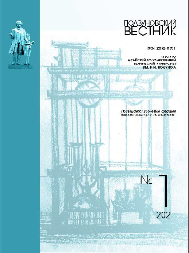ULTRA- AND NANOFILTRATION METHODS FOR CHROMIUM-CONTAINING WASTE WATER TREATMENT OF GALVANIC PRODUCTION
doi: 10.25712/ASTU.2072-8921.2021.01.017
Keywords:
removal of oil products, removal of chromium, waste water, ultrafiltration, nanofiltration, membranesAbstract
The urgency of the problem of formation and discharge of chromium-containing wastewater of galvanic industries is shown. The possibility of organizing the process of treating wastewater of galvanic industries, using membrane methods, has been substantiated. It is shown that when using reverse osmosis or nanofiltration to remove chromium from waste water, the key point is its pre-treatment from impurities that affect the main characteristics of membranes. The study of the ultrafiltration process is necessary to determine the effectiveness of its use for pretreatment of waste water before nanofiltration. Dependences of efficiency and permeability for flat and hollow fiber ultrafiltration membranes made of polysulfone have been obtained, demonstrating the feasibility of using this technology for pretreatment. The cleaning efficiency for all types of ultrafiltration membranes was at least 93 %. It was found that the change in permeability depends on the type of membrane and does not depend on the concentration in the studied range. The results of studies of purification of model solutions and real wastewater from chromium at various concentrations using a nanofiltration flat polysulfone membrane are presented. The efficiency for all cases was more than 98 %. The completeness and efficiency of the combined use of ultrafiltration and nanofiltration has been proven to achieve a high degree of purification and the possibility of organizing a closed water circulation cycle.
Downloads
Published
How to Cite
Issue
Section
License
Copyright (c) 2021 Ilya G. Chigaev

This work is licensed under a Creative Commons Attribution 4.0 International License.















 .
. This work is licensed under a
This work is licensed under a 
